Table of Contents Show
The “20-year” fashion cycle is a term people use to describe the cyclical nature of fashion: how styles go out of fashion and then become trendy again around 20 years later.1Andersen, Kurt. You Say You Want a Devolution? Vanity Fair. 2011, Dec. 7. Mini skirts from the ’60s came back in the ’80s; ’70s platform shoes and straighter hair came back in the ’90s; on and on and on.
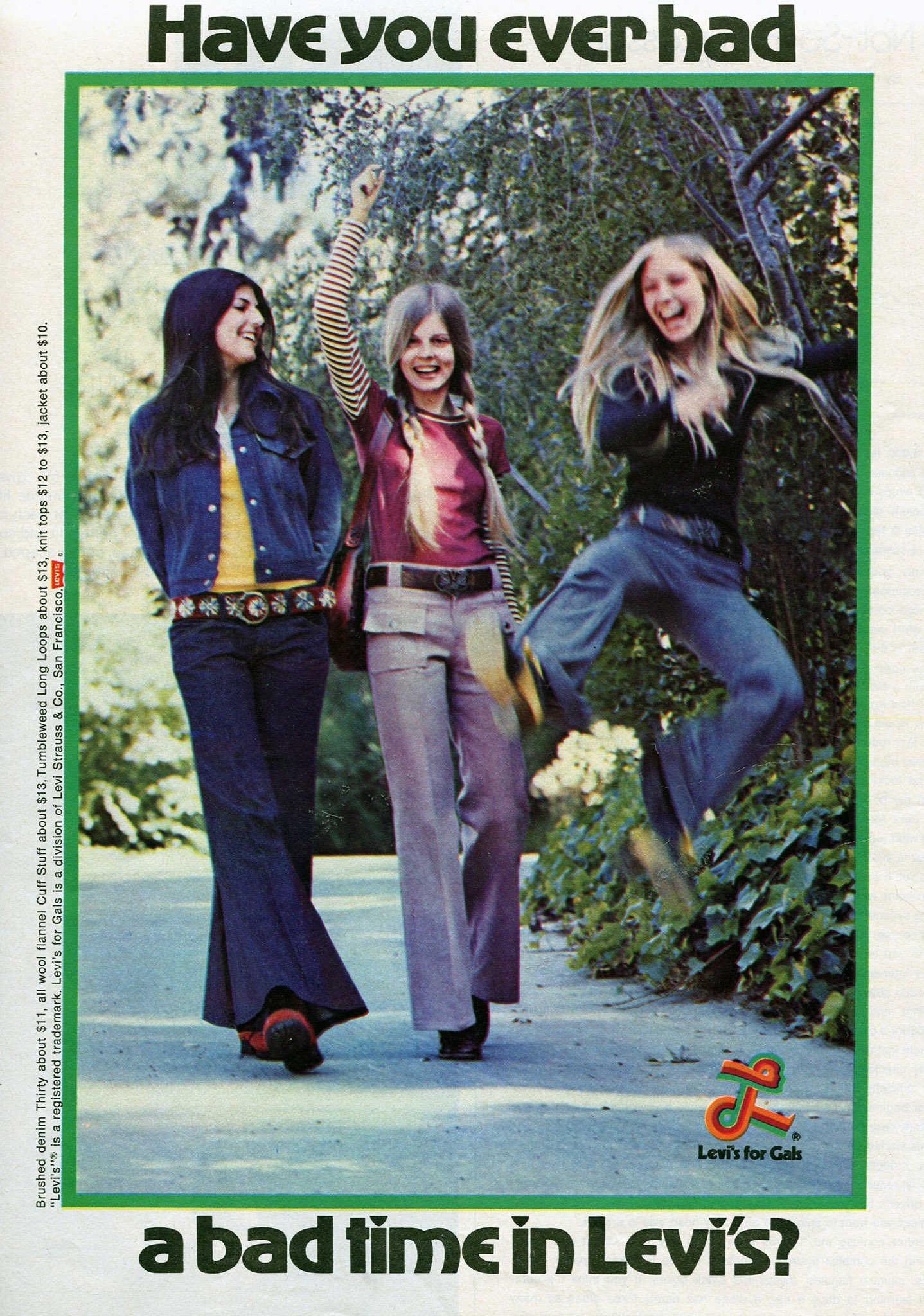
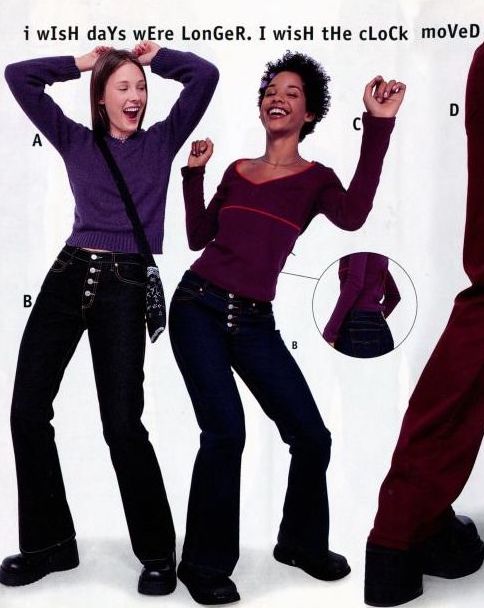
But recently, trends seem to be cycling much quicker. During the pandemic, the movie Not Okay (Quinn Shephard, 2022) was released.2
Shephard, Quinn, director. Not Okay. Searchlight Pictures, 2022 It was
filmed from July 2021-September 2021, and the main character of the movie, Danni, was styled with almost every trend that was popular during 2021. But even just by the time the movie came out in July 2022, only less than a year later, Danni’s fashion already seemed incredibly outdated. It somehow already felt like a period piece of the year prior.
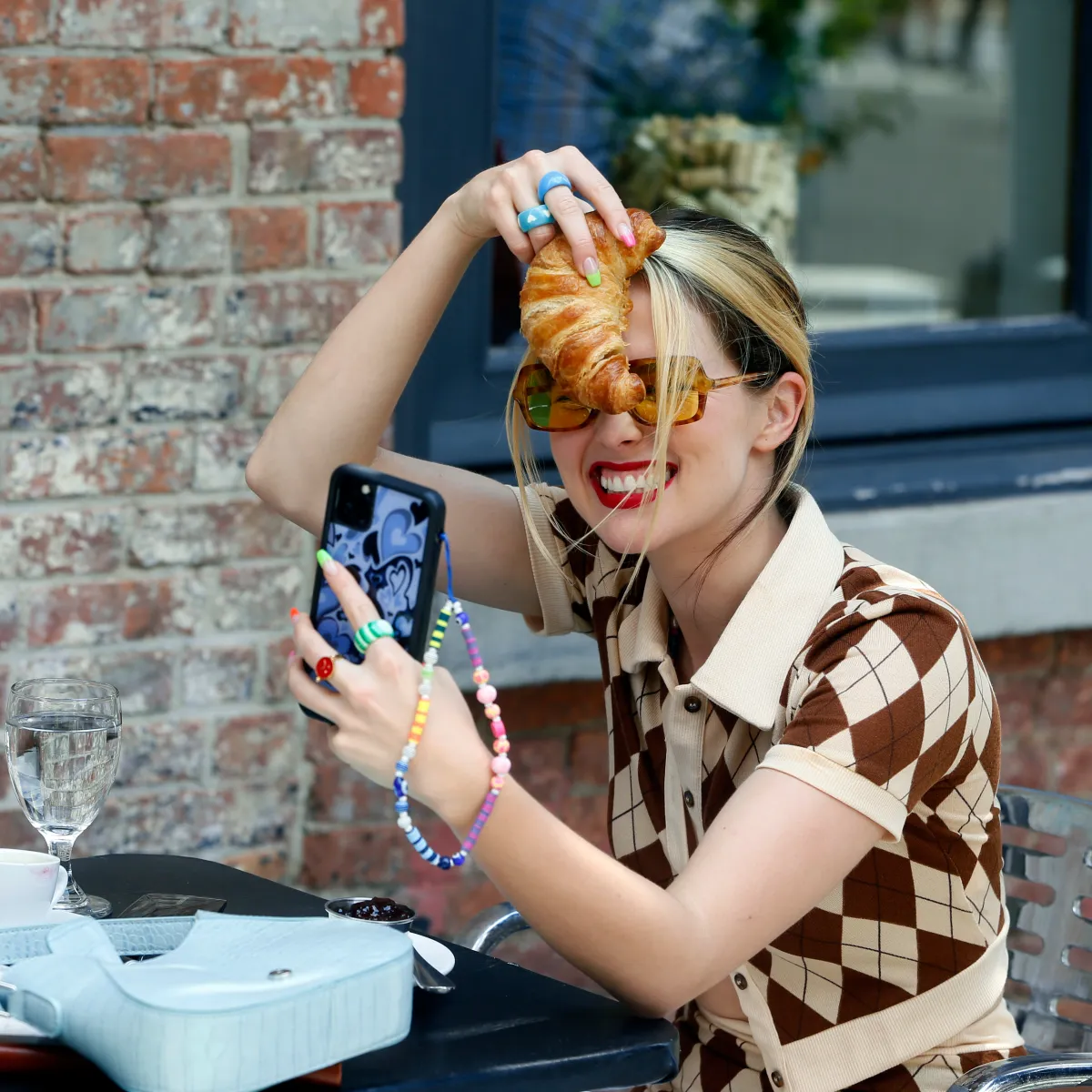
And looking at these trends now, not only are they out of style, but the exact opposite is popular. We are in time where trends can cycle within the space of a few years or even a few months. Unlike in previous decades, it’s hard to pick one or two iconic styles of the past decade because there have been so many different ones that it’s almost overwhelming. So how did we get to this point? What changed the trend cycle so drastically?
Fashion Cycles: A Historical Overview
Surprisingly enough, the 20-year cycle began as a 150-year cycle, first theorized by James Laver — who was a museum curator and art historian with a particular interest in the history of fashion and costume. Most of his ideas centered around the idea that fashion is never random or arbitrary; it’s cyclical and predictable.3 El Maghraby, Laila. “Study of Fashion Theories by James Laver.” International Journal of Multidisciplinary Studies in Art and Technology, vol. 5, no. 2, 2022, pp. 55-80. We can look back at history and find patterns to predict what the future of fashion will be. We can look at the current political or economic climate of the world and predict what clothes will be in style.
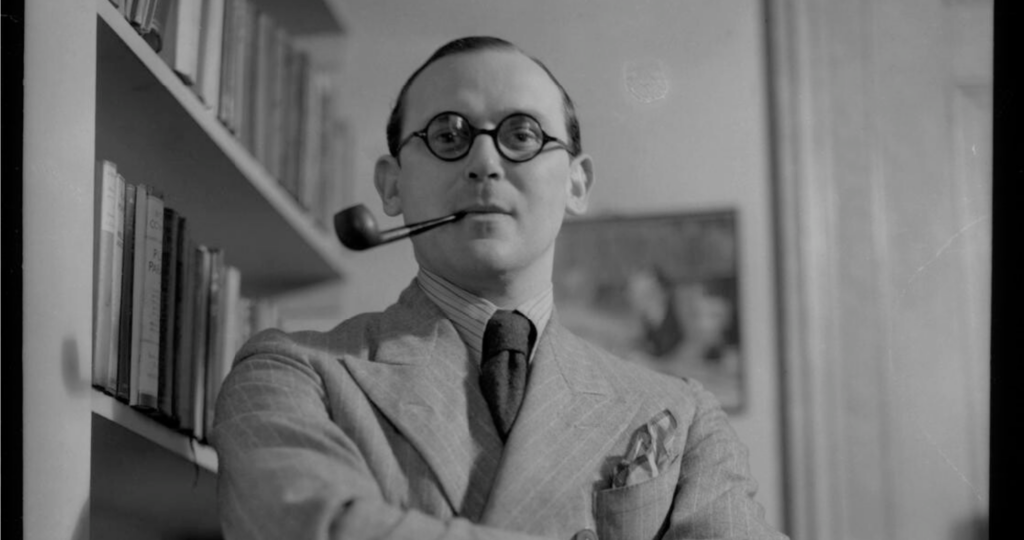
In Laver’s 1937 book Taste and Fashion, he outlined what he coined as “Laver’s Law,” which was an attempt to condense the complex cycle of fashion trends into an easily digestible timeline. This is what Laver’s Law looks like:
| Indecent | 10 years before its time |
| Shameless | 5 years before its time |
| Outré (Daring) | 1 year before its time |
| Smart | Current Fashion |
| Dowdy | 1 year after its time |
| Hideous | 10 years after its time |
| Ridiculous | 20 years after its time |
| Amusing | 30 years after its time |
| Quaint | 50 years after its time |
| Charming | 70 years after its time |
| Romantic | 100 years after its time |
| Beautiful | 150 years after its time |
Laver theorized that trends would take at least 30-50 years to become acceptable again, and anywhere from 70-150 years fully come back into fashion. 4Laver, James. Taste and Fashion: From the French Revolution to the Present Day. George G. Harrap & Co., 1937.
It’s unclear exactly when Laver’s 150-year cycle changed, or who came up with the new “law,” but, at some point, people began calling fashion’s cyclicality the “20-year” cycle. Perhaps it was the unprecedented amount of women who entered the workforce during WWII that necessitated more formal, conservative wear. Perhaps it was when standardized sizing and commercial retailers became popular in the late ’40s to ’50s.5Stampler, Laura. The Bizarre History of Women’s Clothing Sizes. Time. 2014, Oct. 23. Regardless, the 150-year cycle was condensed into a 20-year one. Laver’s Law can still be applied to this 20-year cycle though, just with the number of years heavily condensed.
Both cycles illustrate the natural pace of fashion: it’s not like there was a sharp shift at the end of every decade where everyone changed their styles all at once, but rather, trends flowed into each other. People grew tired of flashy styles and they slowly transitioned to minimalistic ones; people grew tired of being too minimalistic and they went back to flashy.
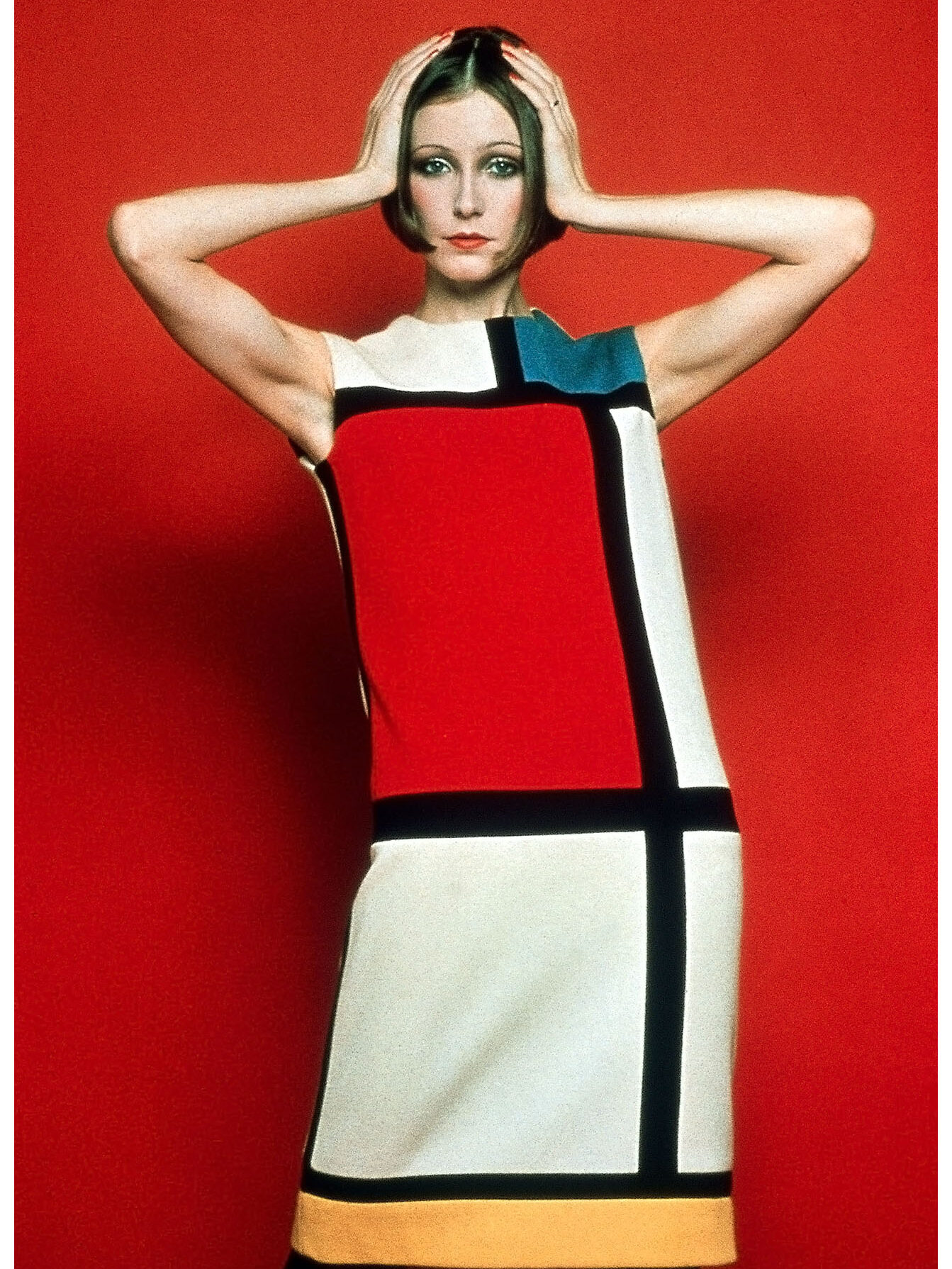
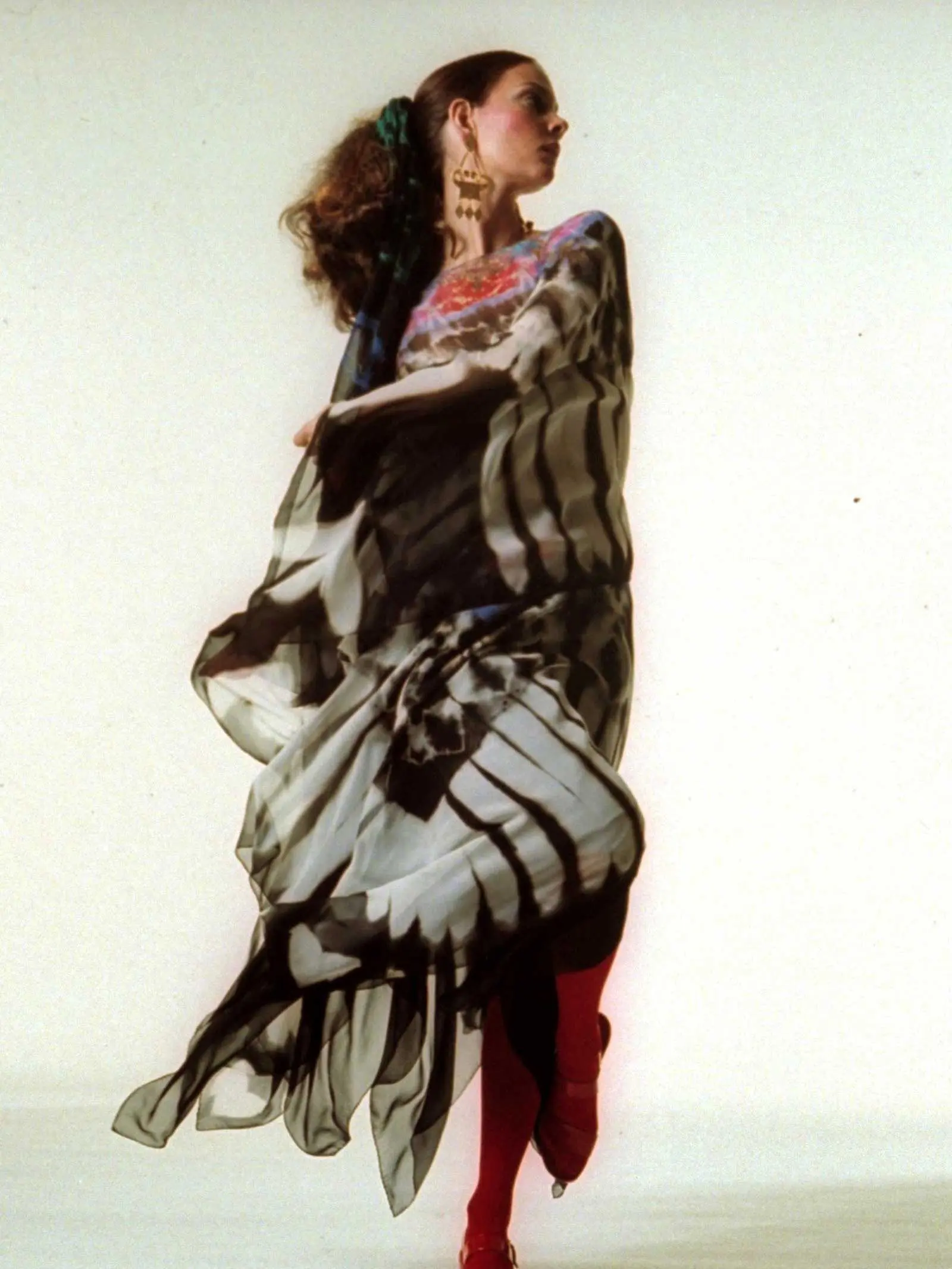
It wasn’t just time that caused changes in trends, though. The political climate, the economy, and culture as a whole all have a large impact on fashion. When the world changes, the clothes we wear will reflect that change.
How World Events Affect Fashion
Something in particular people talked about was the trend cycle of women’s hemlines, known as the “hemline index.”6Kelly, Jack. Skirt Lengths, Lipstick, Men’s Underwear And Champagne Sales Are All Recession Indicators. Forbes. 2023, Aug. 12. The hemline index theorizes that when the economy is doing well, women’s skirt lengths are shorter, and when there’s a recession, skirts get longer. For instance, the 1920s were famous for shorter, “scandalous” flapper dresses, but when the Great Depression hit, the hemlines fell back down.7Waligora, Mallory. When fashion meets finance: The hemline index. The Oakland Post. 2023, Nov. 15.
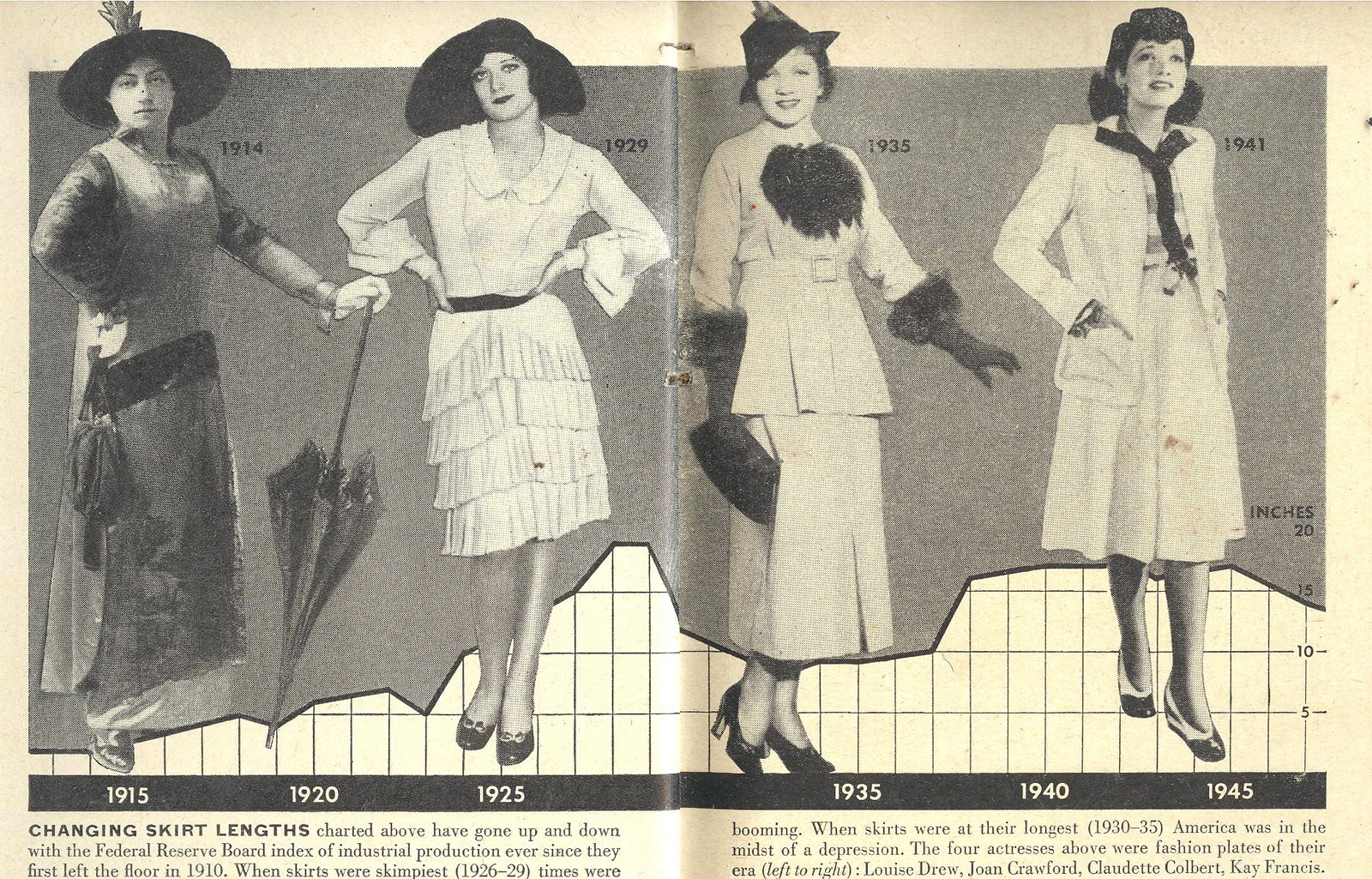
When Laver theorized that fashion was influenced by more than just social or cultural factors, he wasn’t just referring to social or cultural influences — he was also referring to the political climate. When the world is going through major political and economic shifts, everything will be affected, including fashion trends. Laver spoke about this idea of politics affecting style:
“If we could understand the full significance of a woman’s hat we could prophesy her clothes for the next year, the interior decoration of the next two years, the architecture of the next ten years, and we would have a fairly accurate notion of the pressures, political, economic and religious that go to make the shape of an age.”8Laver, James. Fashion: A Detective Story. Vogue. 1959, Jan 1.
Nothing affects the political climate more than a major event. 9/11 is most definitely an example of this. 9/11 taking place specifically in New York City, one of the major fashion capitals of the world, had ripple effects on the fashion industry. For some, dressing up seemed useless in the face of tragedy. Others thought the best way to cope was to not let creativity or inspiration falter in the face of tragedy.
The 9/11 attacks spawned the creation of the CFDA/Vogue Fashion Fund, a program helping to launch smaller, up-and-coming fashion designers by providing them with mentors and funding. Anna Wintour, the director of Vogue, called the CFDA/Vogue Fashion Fund “an exercise in optimism and positivity.”9How September 11 Changed American Fashion. CFDA. 2016.
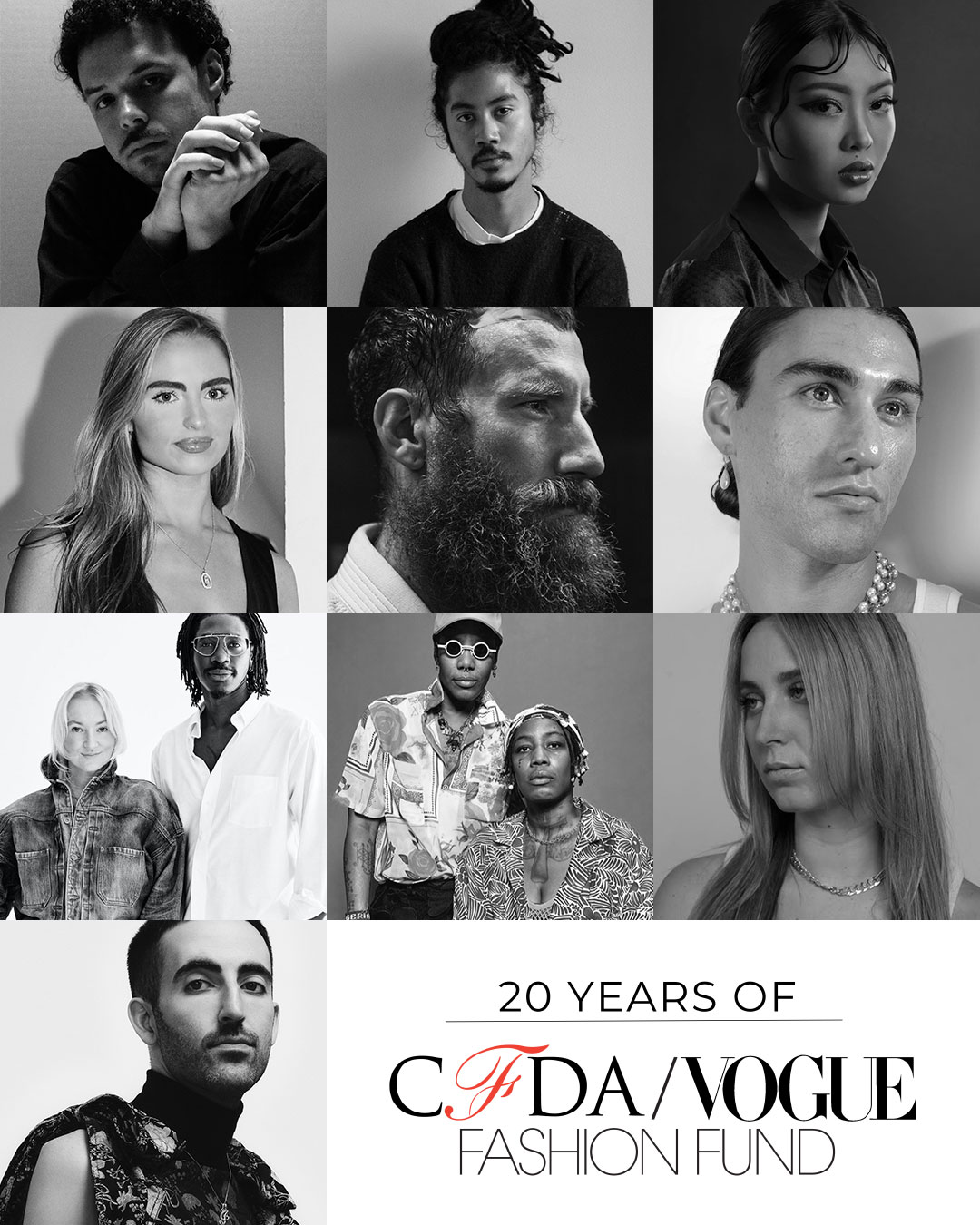
The same was true for the pandemic. Some people coped by solely focusing on dressing comfortably, as it was totally acceptable to wear sweatpants and pajamas all-day everyday. But others coped by diving heavily into self-expression and fashion; either for distraction or just as a way to hold on to some sense of creativity and normality.
Pandemics And Fashion
Surprisingly enough, pandemics dramatically affecting our fashion culture is nothing new. Much like how masks were simultaneously a necessity for our health and at times, a fashion accessory, the Spanish Flu had the “flu veil.” During the popularity of the flu veil, masks were seen as primarily medical devices, but the flu veils were considered both good for your health and very fashionable.10Chantree, Robin, and Brigid Trott. “Viral Fashion: Clothing in the 1918 Influenza Pandemic and the COVID-19 Pandemic.” Fashion Studies, vol. 5, no. 1, 2024, pp. 1-46. Even people living as far back as the Black Plague were influencing fashion with masks with the well-known “plague doctor mask.”
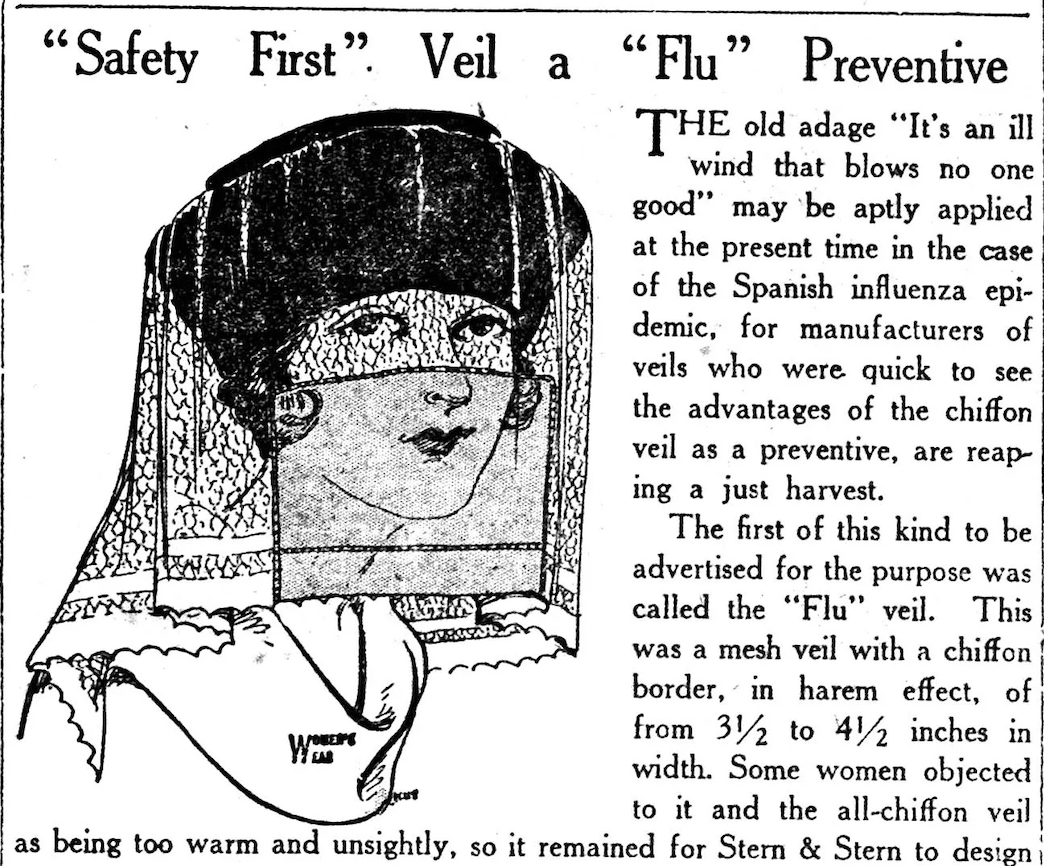
The Black Plague wiped out anywhere from 30-50% of all of Europe.11
Belich, James. The Black Death and European Expansion. Faculty of History, University of Oxford. 2014. It changed nearly every aspect of life for the survivors — social, political, economic, and cultural. A desire for hope and a realization that life could end at any moment contributed heavily to the cultural and artistic Renaissance, and one of the affected industries was in fact fashion. After all, the entire idea of the Renaissance was a “rebirth” of art and culture, so fashion trends were reborn as well.
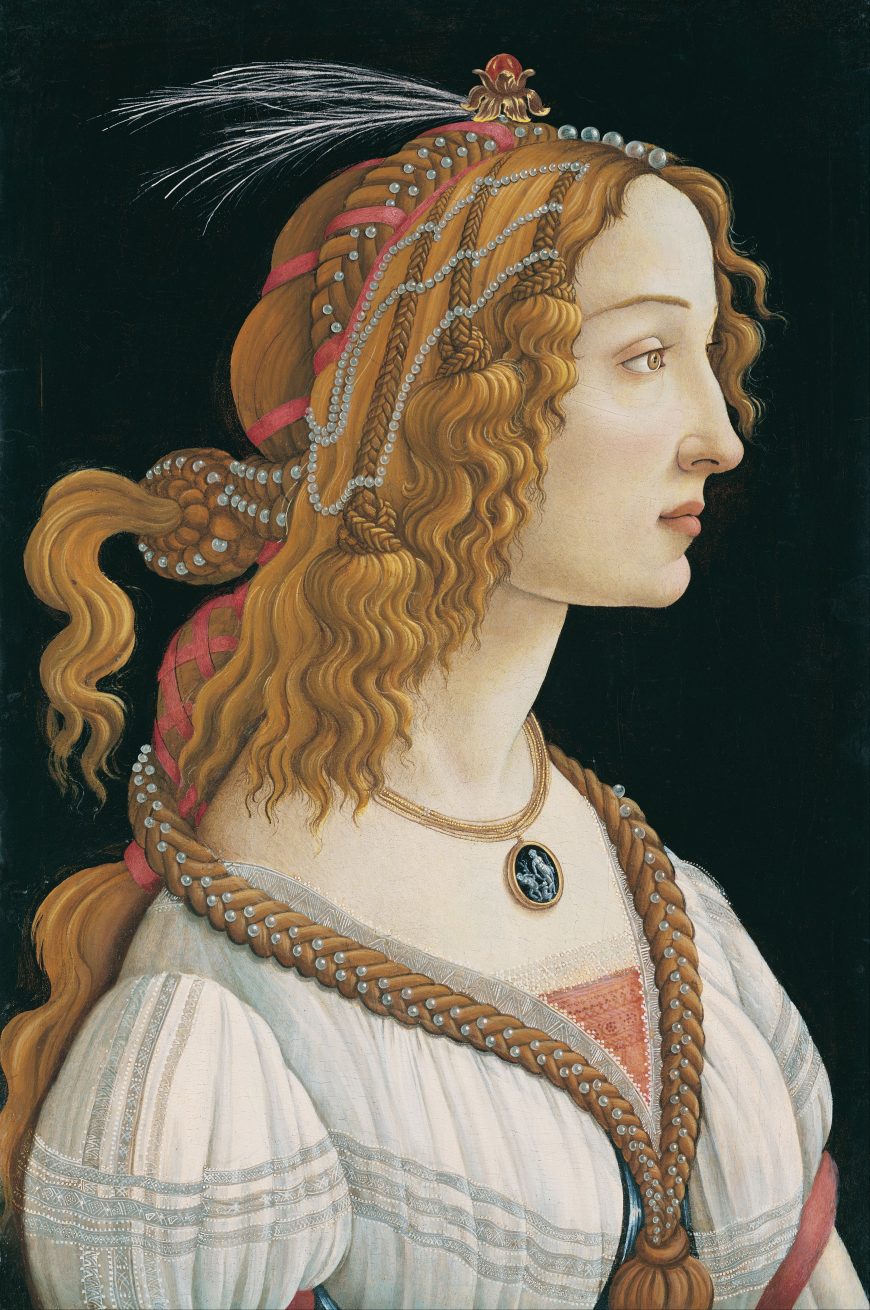
The people who survived the plague gained a huge amount of inheritance from all the deaths that were around them, leading to an increase in consumerism. People began creating clothes with more luxury materials like silk and wool, and people began investing more money and time into their fashion.12How the worst pandemic in human history prompted the birth of Italian luxury. NSS Magazine. 2020, Apr 14.
Without modern medicine, a pandemic in the Middle Ages was all-consuming — people didn’t have time for anything except surviving and working. But the Renaissance saw a huge increase in leisure time, and where there is leisure time, there is creativity, innovation, and individuality. People had time to live — not just survive.
“In contrast to the medieval period, where clothing was primarily utilitarian and dictated by social hierarchy, Renaissance fashion became a means of personal expression. People began to view clothing as an extension of their identity and a reflection of their social status, resulting in the emergence of distinct fashion trends.”13Khirba. The Impact of the Renaissance on Fashion. Fashion Law Journal. 2023, Jun. 23. 14
As art got more opulent and grand, so did fashion. Colors were less muted and more vibrant. Dresses went from being simpler, draping gowns to having larger skirts and more defined bodices. People began wearing more accessories like ornate jewelry and embroidered gloves.
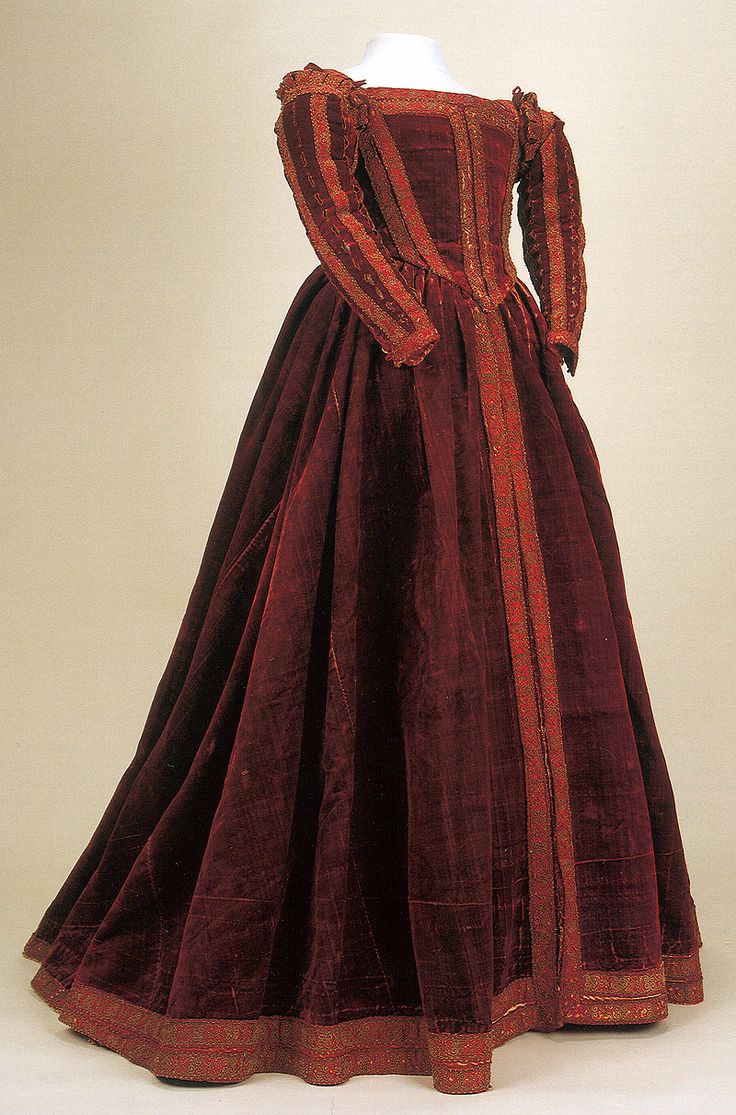
Similarly to the Renaissance, the Roaring ’20s was also right on the heels of a pandemic: the Spanish Flu. Not only was it after the Spanish Flu, but also WWI. People were partying more and embracing living life.15Norris, Craig. After the Spanish flu came The Roaring 20’s — what fashion trend will follow COVID-19? CBC News. 2021, Jan 16. Women were more independent and less traditional; not only did they have more disposable income because they had been working during the war, but they could also now vote.
They were flaunting that independence and embracing a rebellion against traditional women’s roles by wearing more “revealing” clothes (flapper dresses), cutting their hair short, drinking and smoking more, and being more casual about sex.16History.com editors. Flappers. History.com. 2018, Mar 6.
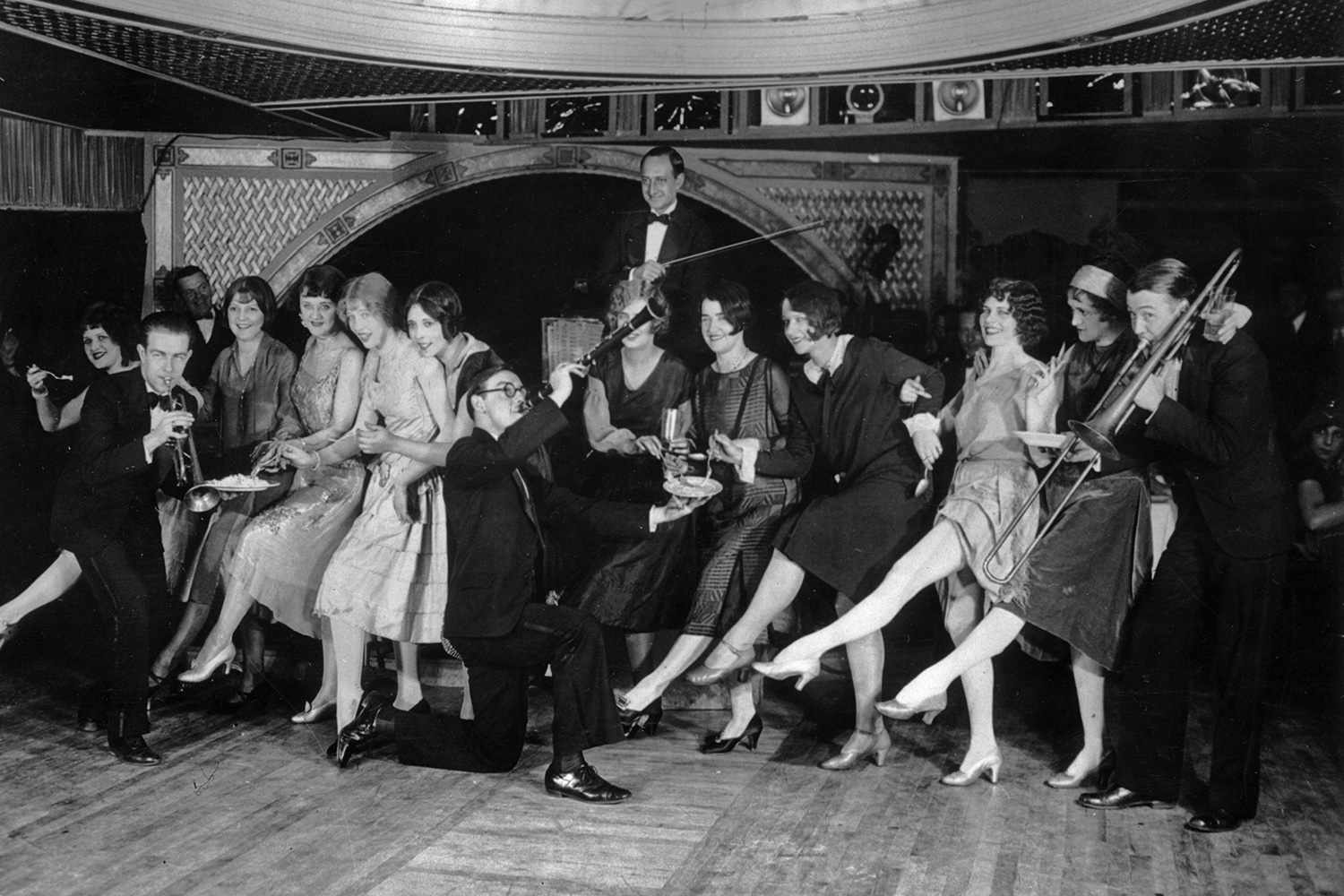
And on the heels of these sweeping fashion changes were fashion icons; role models that people looked to for what was newly trendy.
The “It” Girl And Pre-Influencer Culture
There were fashion role models before the ’20s, but they were more aspirational than realistic for most people. The most stylish people in the 1700s and 1800s were royals; it would be pretty difficult for a majority of people to copy a queen’s style of dress.
But during the Roaring ’20s, Zelda Fitzgerald became known as the “first American flapper” and influenced both flapper culture and flapper fashion.17Manikowski, Amy. Zelda Fitzgerald – the first American flapper. Biblio. 2021. 1927 saw the release of the film “It,” which starred Clara Bow. After the film was released, everyone began calling Clara Bow the “It Girl” and the term was born.18The History of the It Girl. WWD. She too had a strong influence on ’20s fashion, and this concept of the “It Girl” as a fashion influence became more and more common.
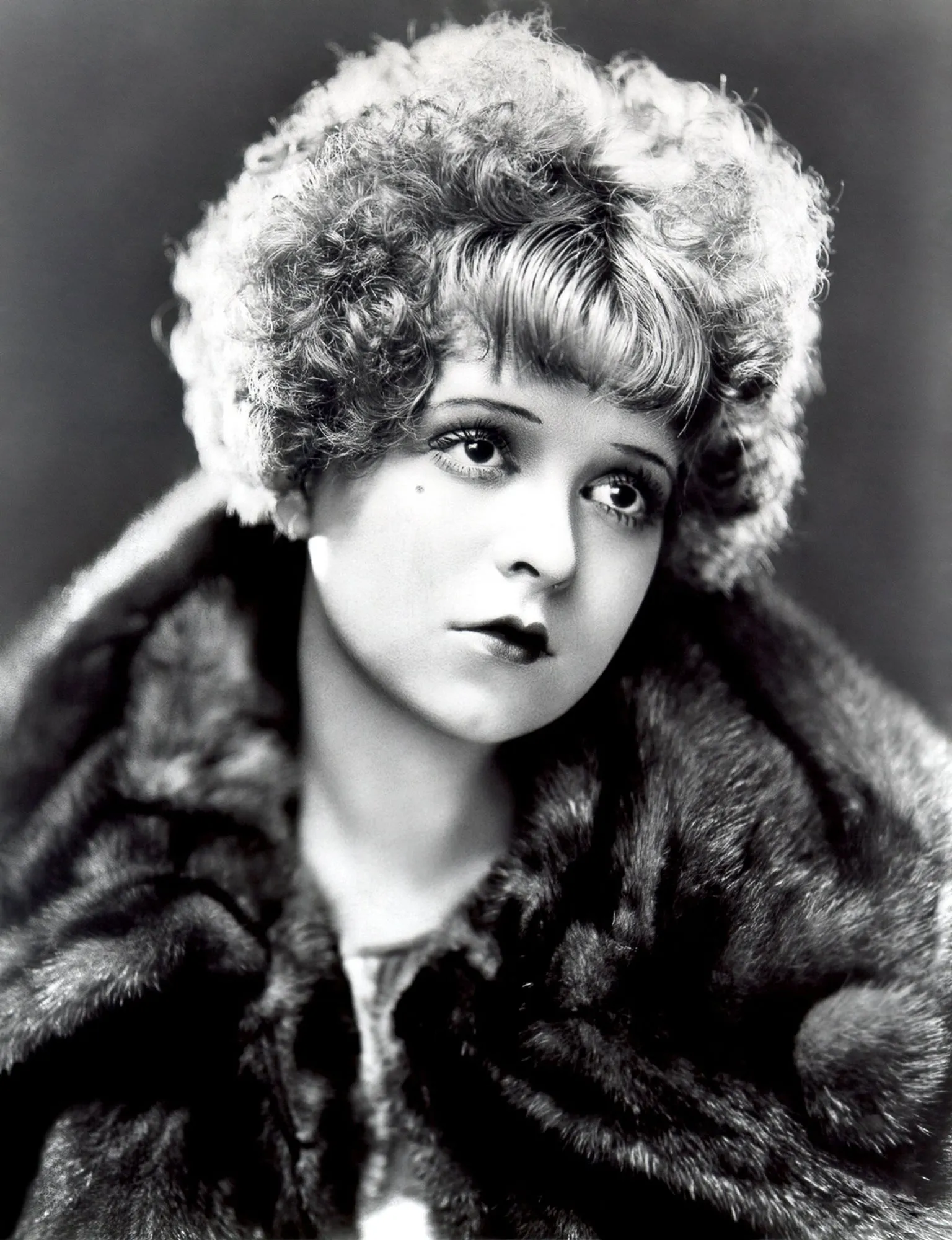
After Zelda Fitzgerald and Clara Bow, each decade seemed to have an “it” girl or two that provided women with a fashion role model to look up to. Audrey Hepburn, Marilyn Monroe, Twiggy, Jane Birkin, Madonna, Kate Moss, Paris Hilton — all “it” girls of their time who heavily influenced the fashion of the decade. They can be thought of as the “influencers” of the time — before influencers were a thing.
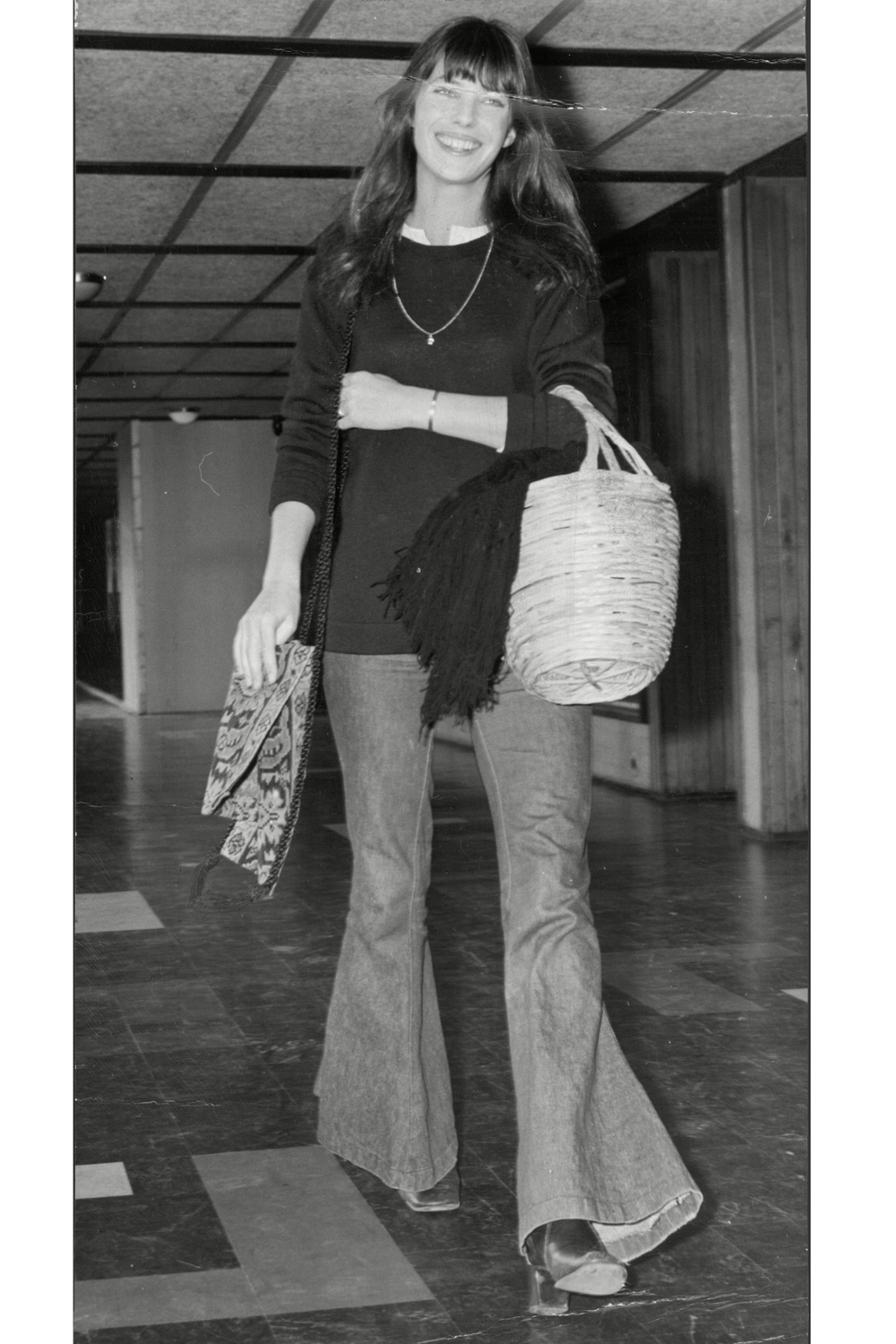
All of these things slowly changed fashion: trend cycles, world events, pandemics, fashion influencers. Though after the rise of the internet, things expedited.
A New Age
James Laver said something interesting about why fashion shifts with time:
“Today, if you travel the world, everything is the same. If you stay in one spot for a year, however, practically all the women change their hats. We have exchanged the tyranny of place for the tyranny of time. We have the Time Disease.”19Laver, James. Fashion: A Detective Story. Vogue. 1959, Jan 1.20
If this was true before the internet and social media, it is most definitely true now. Cultural changes can not only happen worldwide now, but in record time. The Renaissance began in Italy in the early 14th century and didn’t reach England until the 16th century. That seems absolutely absurd to us now, because something can happen in the US and someone on the other side of the world can be aware of it instantly.
The more popular that social media has become, the more we have developed the “Time Disease,” and the faster and faster trend cycles move. Trend cycles were already shortening in the 2010s, but 2020 was something else entirely.
COVID-19: The Catalyst For Accelerated Fashion
An example of the acceleration of the trend cycle in the pandemic is again, the 2022 movie Not Okay (Quinn Shephard, 2022). Not Okay is about Danni — an insecure girl who desperately wants to become famous on the internet, and does so through some pretty reprehensible methods. Because she craves attention and doesn’t really know who she is, she fully leans into almost every trend that was popular during 2021.
Danni has dyed blonde money pieces, a Wildflower iPhone case with a beaded keychain attached to it, and brightly color-blocked nails. She wears chunky, flashy resin or plastic rings, tinted sunglasses, argyle skirts, and two-piece sets — all quintessential trends of 2020 and 2021 that were already out of fashion by the time of the movie’s release.
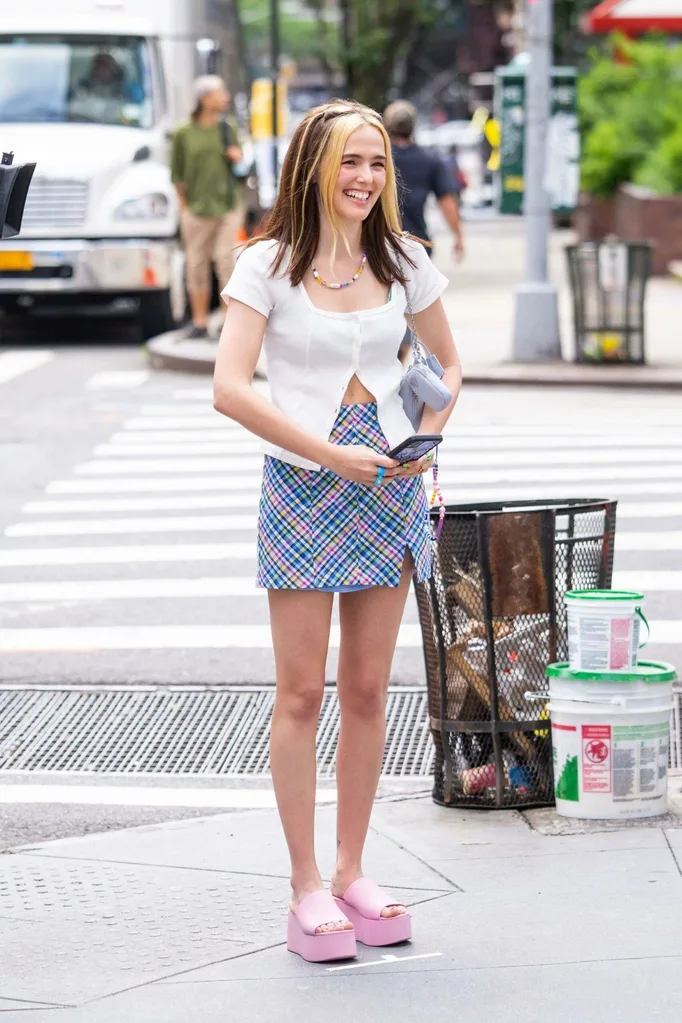
The movie’s costume designer, Sarah Laux spoke about Danni’s style and said that:
“Danni doesn’t know fashion history. She doesn’t necessarily even have good taste. She’s just a consumer. She just takes and takes and takes and then sheds it.”21Soo Hoo, Fawina. The Latest Challenge in Costume Design: Reimagining Influencer Fashion. 2022, Jul. 29.
This idea of taking styles and then shedding them quickly after is very emblematic of the concept of “fast fashion.” Fast fashion is a term that refers to both companies and consumers focusing on quantity over quality of clothing. Instead of releasing clothes that will last for multiple years, fast fashion companies will release clothing that is cheaply made and very trendy. The costume designer for Not Okay had Danni lean into these fast fashion trends heavily, and that becomes more and more evident the longer the movie has been out.
Now these styles that emerged in 2020 and 2021 don’t just feel outdated, but like they are completely removed from current trends, only four to five years later. Trends used to slowly swing into each other: the ’80s permed hair slowly lost volume and turned into ’90s blowouts, and ’90s blowouts slowly lost volume and turned into the early 2000s Avril Lavigne pin-straight hair.
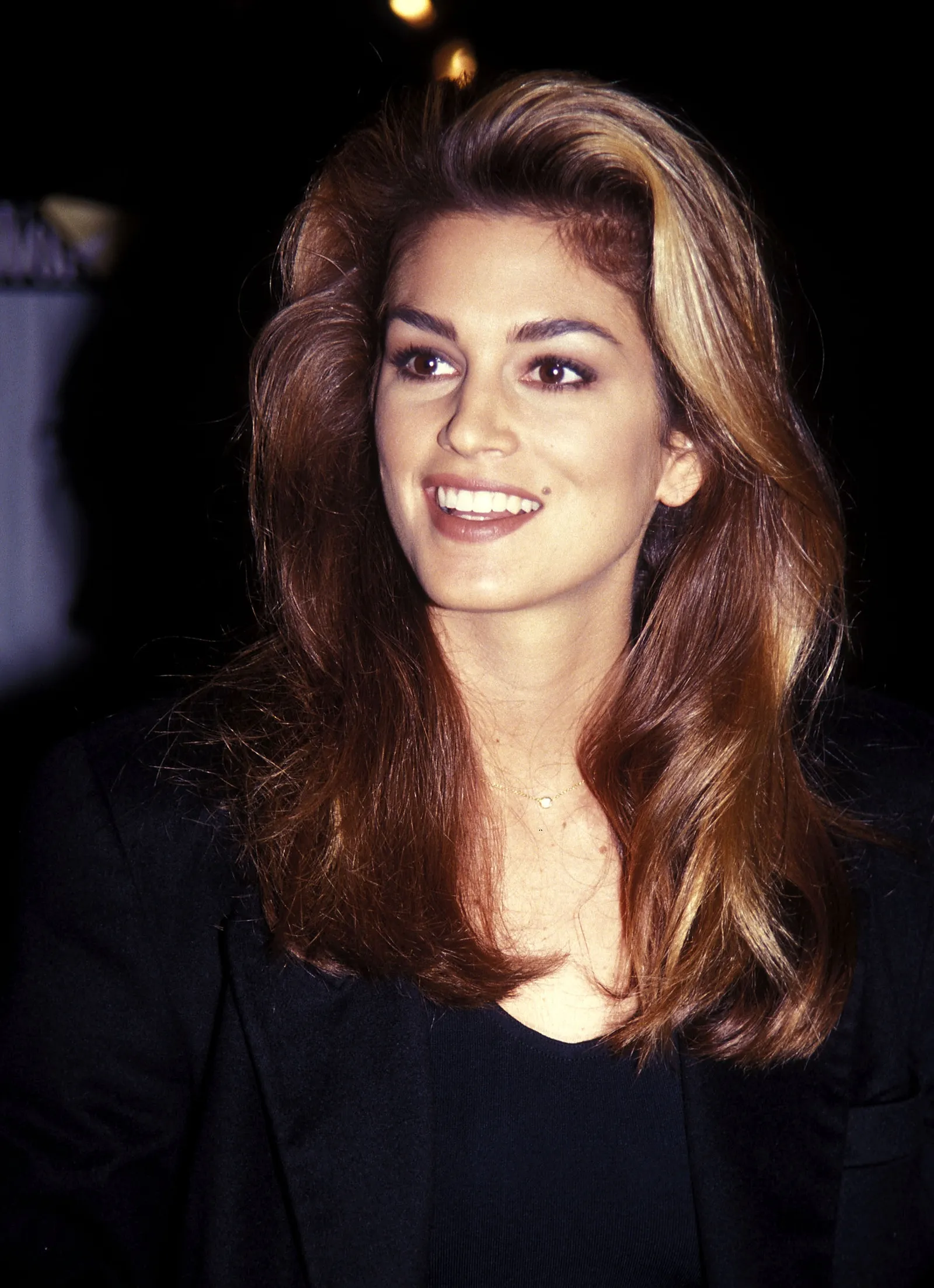
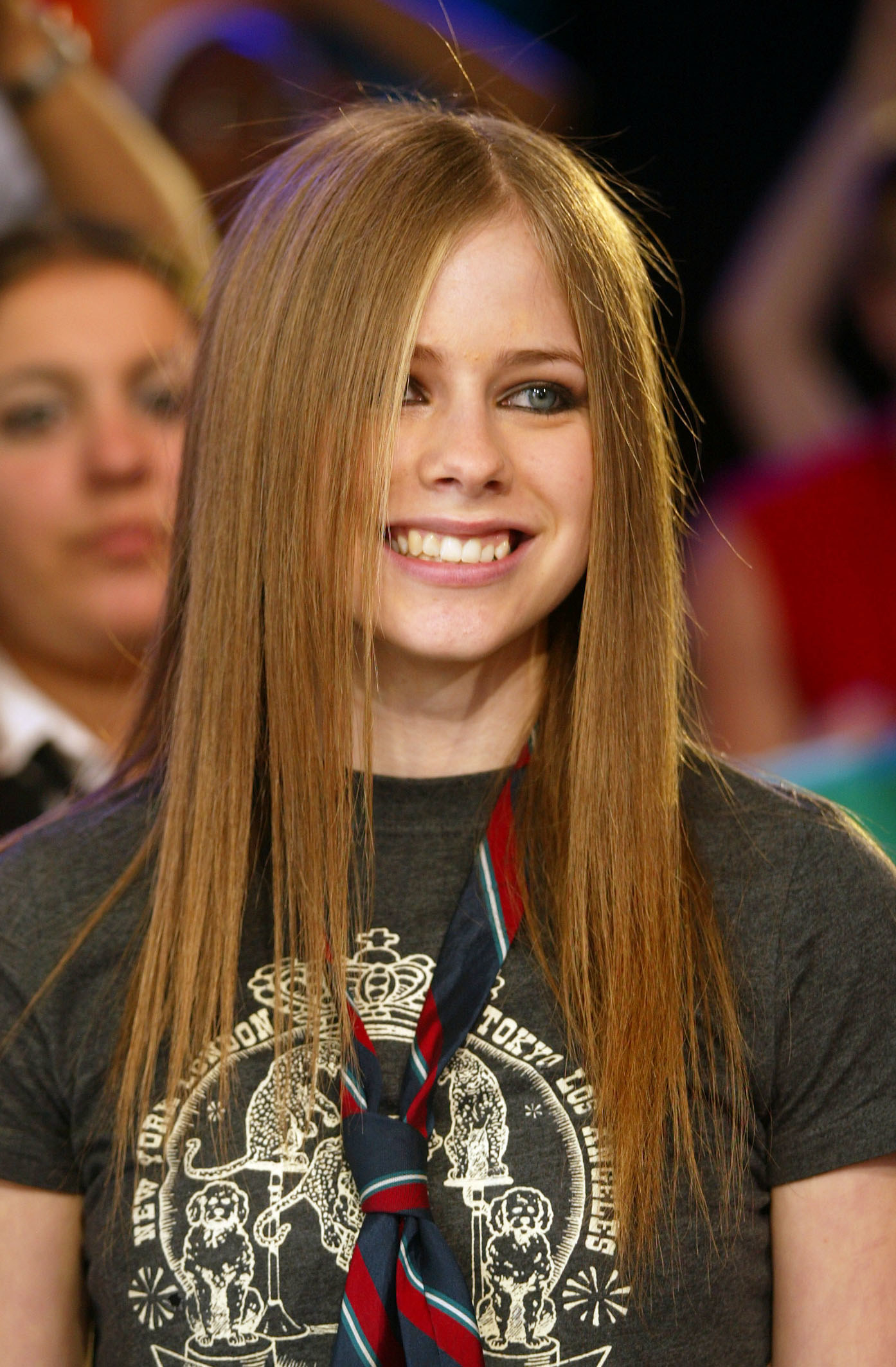
But it seems like starting in 2020, the pendulum began to quickly and dramatically swing back and forth. So why did this happen? What about the pandemic made the trend cycle accelerate so dramatically?
Freedom Of Expression, Internet Culture, And Political Uncertainty
First of all, people had more free time and freedom to express themselves than ever. We weren’t going to work or even really leaving the house much — if you felt like wearing an outfit you would have been too nervous to wear in public previously, you could spend days at home experimenting with your style.
We had so much time, especially at the beginning of the pandemic, to focus on hobbies or learn new skills. Both of these things are big reasons why the Euphoria-inspired brightly colored eyeshadow became even more popular during the pandemic. You had more time than ever to practice eye looks, and more freedom than ever to wear them during the day.
Not only that, but people also just seemed to care less. We were in a time of unprecedented political uncertainty and discontent — there were so many more important things to worry about, that no one would care if you showed up to the grocery store with bright blue eyeshadow on a Tuesday, or if you started going outside of your comfort zone with your fashion choices.
We were spending almost all of our lives online: school, work, talking to friends, entertainment, and everything else was all done through the internet. We were also doing almost all of our shopping online. If the trend cycle had accelerated because of the internet before the pandemic, spending all of our time on the internet certainly wasn’t going to help.
The Rise Of Consumerism And Microtrends
Because of all the time we spend on the internet, a new kind of trend entered the trend cycle: microtrends. Microtrends are fashionable for a short period and they are practically already out of style by the time the industry picks up on them. Often they’ll be a specific item — like the quilted puffy bag22Jackson, Hannah. Have You Seen This Bag? Vogue. 2023, Nov. 21. or the green House of Sunny dress23Ernest, Maya. Fast fashion drama: How a trendy green dress divided TikTok. Input. 2021, Jun. 3. — not really a general style of clothing.
They likely emerged because of the increase in internet usage, as well as the increase of shopping applications on almost every social media platform. We are no longer just getting ads on social media that link to other online shopping — social media is the online shopping. From TikTok Shop to the Instagram shopping tabs to Pinterest product pins, it is essentially impossible to go on social media without also accidentally browsing online stores.
In addition to social media shopping applications and run-of-the-mill advertisements, influencers have also had a huge impact on consumerism and microtrends. Whereas previously there would be a few “it” girls and fashion role models over the course of the decade, we now have hundreds. The internet and social media allow tons of influencers and celebrities to be prominent all at the same time, leading to an over-saturation of influence on style and fashion.
During the pandemic and even after the pandemic was over, people stopped going to the mall as much. Most of our shopping takes place online now, and it has changed consumer habits drastically. Not only are you influenced and advertised more than ever, but instead of waiting for a store near you to have an article of clothing you want, you can immediately buy it online with the click of a button without even giving it a second thought.
Negative Effects
Unlike the Renaissance and Roaring ’20s, the effects of increased fashion consumerism and innovation haven’t been positive. While Renaissance fashion contributed to a heightened emphasis on art and individualism, and Roaring ’20s fashion created a positive impact on women’s independence and freedom, the acceleration of fashion trend cycles due to COVID has only contributed negatively to our culture. Not only do we have more of an obsession with following trends than ever, but increased consumerism has had some pretty serious effects on our environment and overall health.
Environmental Impact
With the acceleration of trend cycles, items cycle in and out of your closet at a faster rate.
Companies that engage in fast fashion try to churn out styles as quickly and cheaply as possible in order to keep up with the current trends, regardless of whether or not that speed comes at the cost of unfair labor practices and harmful environmental consequences.24Maiti, Rashmila. Fast Fashion and Its Environmental Impact. Earth.org. 2024, Jan 5. Fast fashion companies are the primary distributors of microtrends because they are the only companies that can pump out the items in time for them to still be on trend.
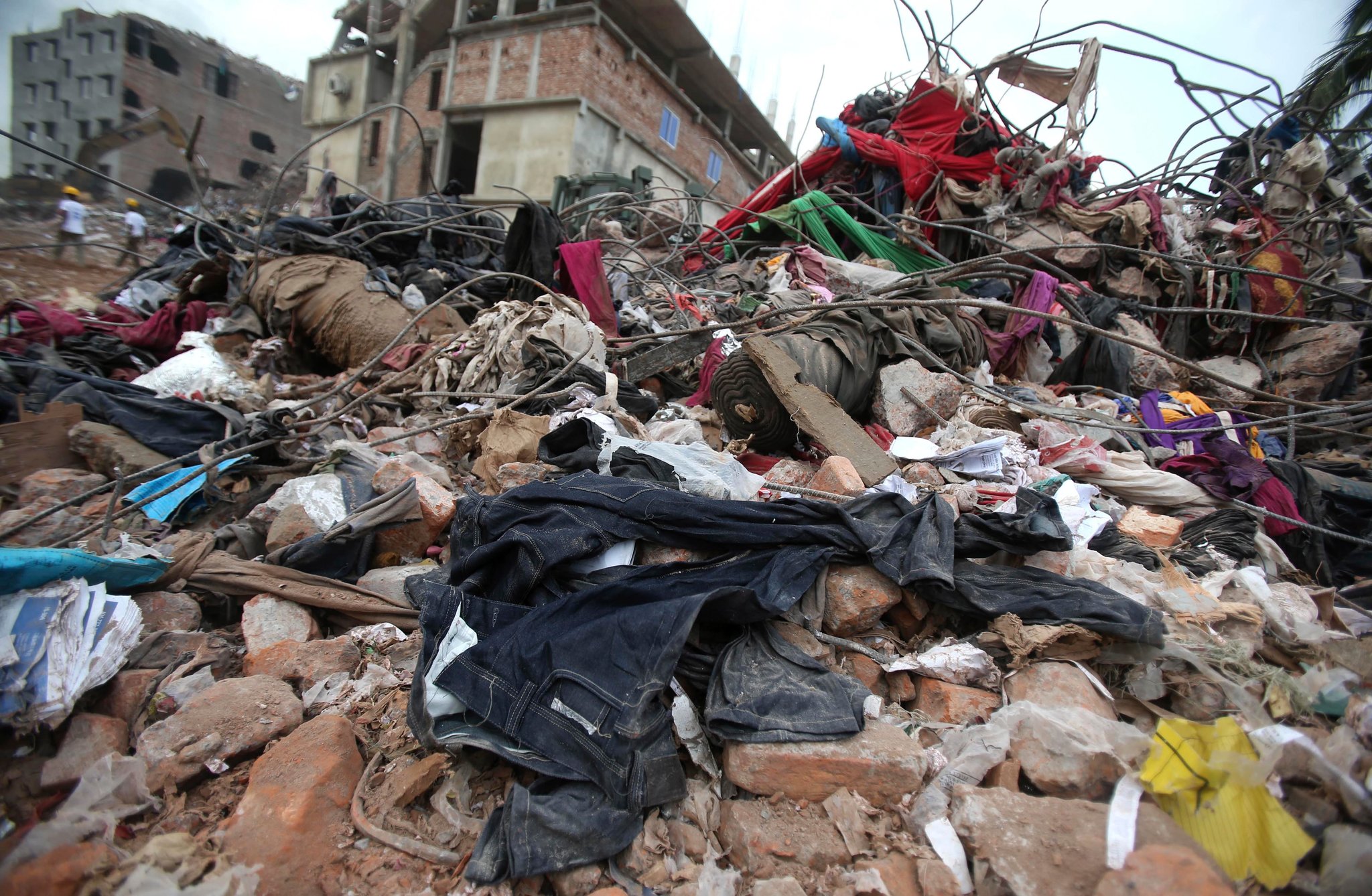
We are not just buying more clothes than ever before, but throwing them out more to buy new ones — creating huge amounts of unnecessary textile waste. The UN Environment Programme launched the UN Alliance for Sustainable Fashion back in 2019 because the fashion industry was such a problem for our environment, stating that “the average consumer buys 60 percent more pieces of clothing than 15 years ago. Each item is only kept for half as long.”25Nijman, Shari. UN Alliance For Sustainable Fashion addresses damage of ‘fast fashion.’ UN Environment Programme. 2019, Mar. 14. And it has only gotten worse since.
Even if you are trying to not shop from fast fashion brands, you most likely still buy and discard items at a faster rate than is needed — because most people do at this point. That is the culture of fashion now.
Body Types Trending With Fashion
An unfortunate consequence of the trend cycle is that it’s not just clothes that trend — body types do too. It is difficult enough that there are these beauty standards for what women should look like, but the fact that these standards are constantly changing makes the whole thing all the more frustrating.
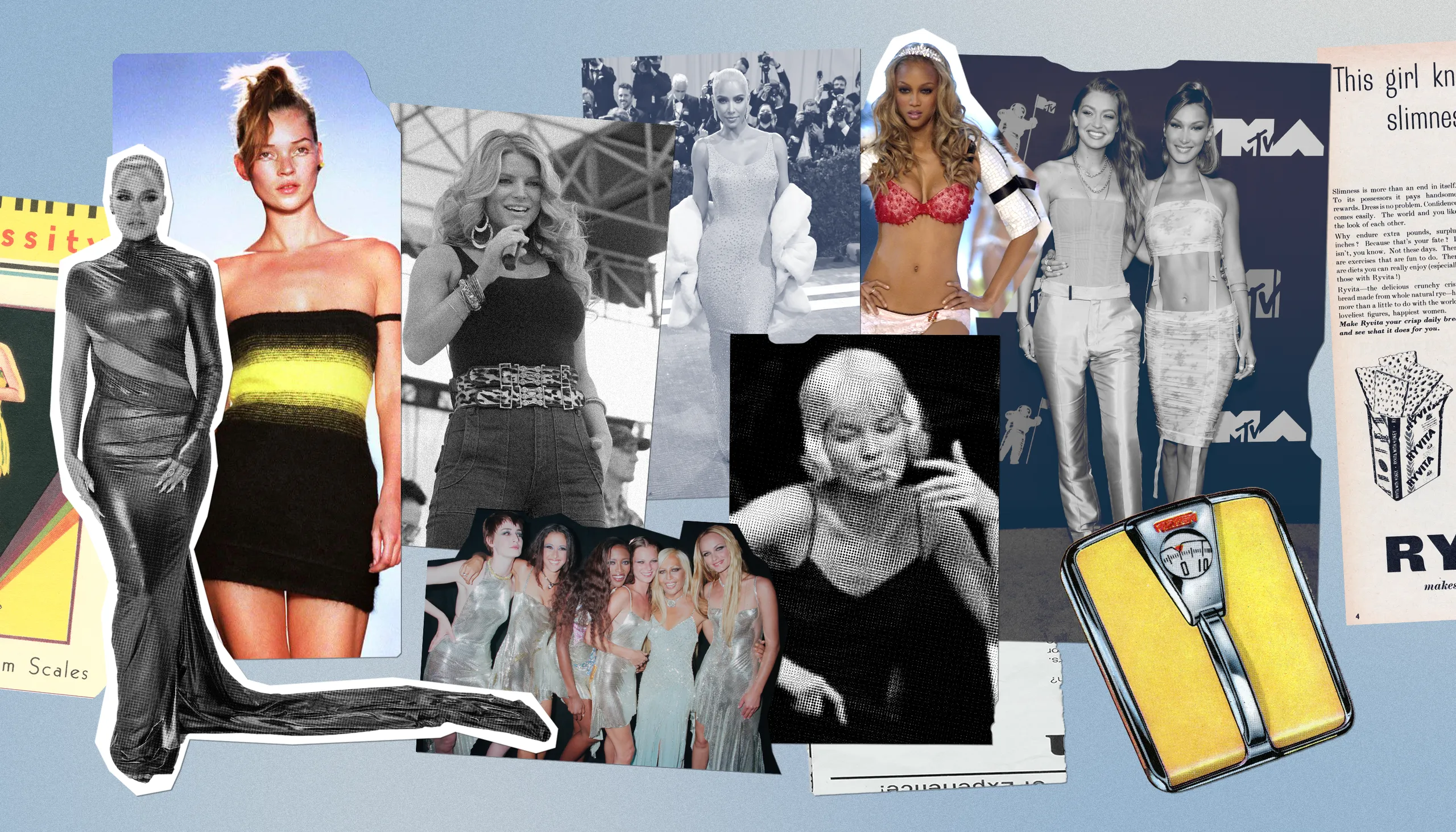
Of course, men’s beauty standards have changed as well, but there is no standard for men that we fixate on quite as much as how large or small a woman’s curves should be — something that women often can’t change without actual medical procedures.
We also don’t change men’s beauty standards with nearly as quick of a pace or as dramatically as we do women’s. Women’s body standards are so absurd that the body every one is trying to avoid like the plague right now is the very same one everyone was trying to attain moments ago, and will soon be trying to attain again.
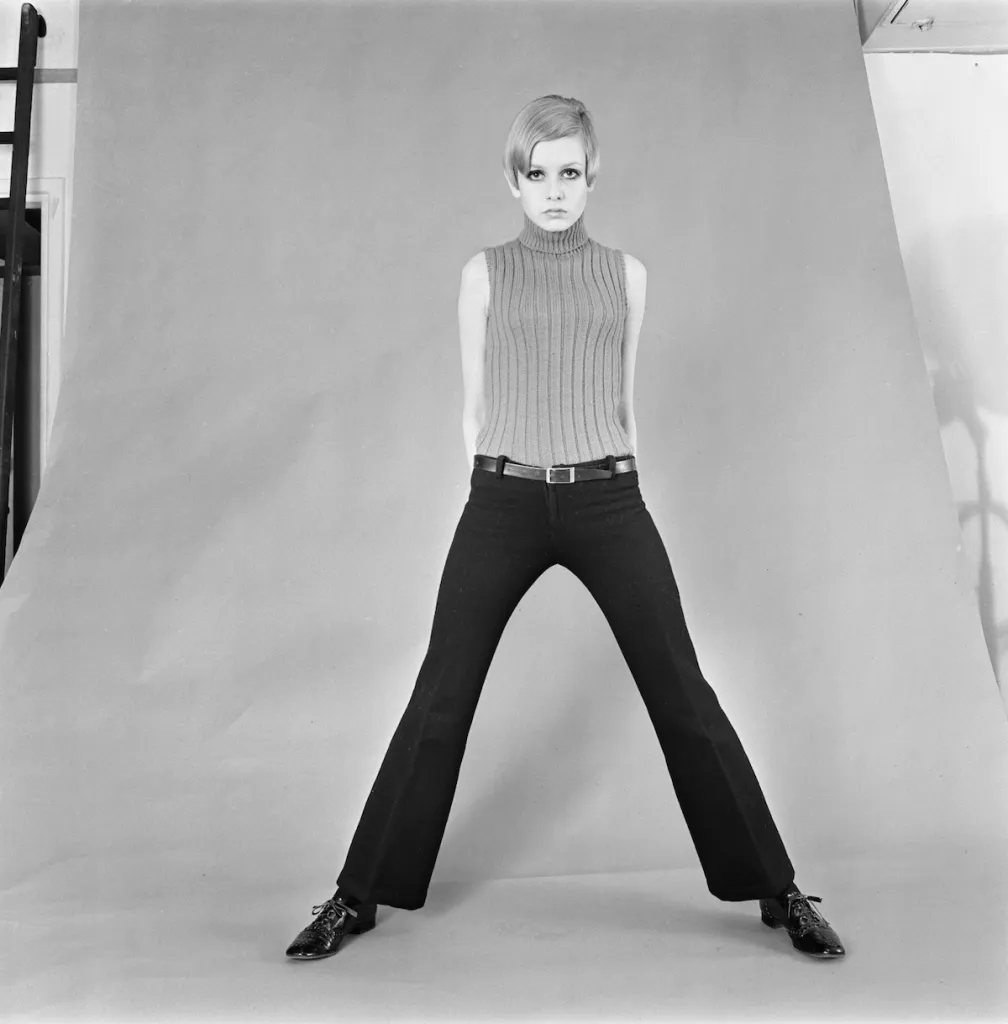
It seems the beauty standard has constantly oscillated back and forth between dramatically thin and dramatically curvy, without ever stopping on one for long enough for women to accept themselves. When the 1920s flapper style androgynous style was trending, the standard was stick-thin. The ’40s and ’50s was the era of “old Hollywood,” and the standard became curvy again. Then the Swinging ’60s: Twiggy, and stick-thin again.26Nolen, Jeannette L. Twiggy. Britannica. 2024, Nov. 11.
Then back to curvy in the ’80s. Then back to thin in the ’90s and early 2000s with “heroin chic.”27Nash, Alanna. The Model Who Invented Heroin Chic. The New York Times. 1997, Sept. 7. Then back to curvy — not just naturally so, but cosmetic-procedurally curvy — with Kim Kardashian.
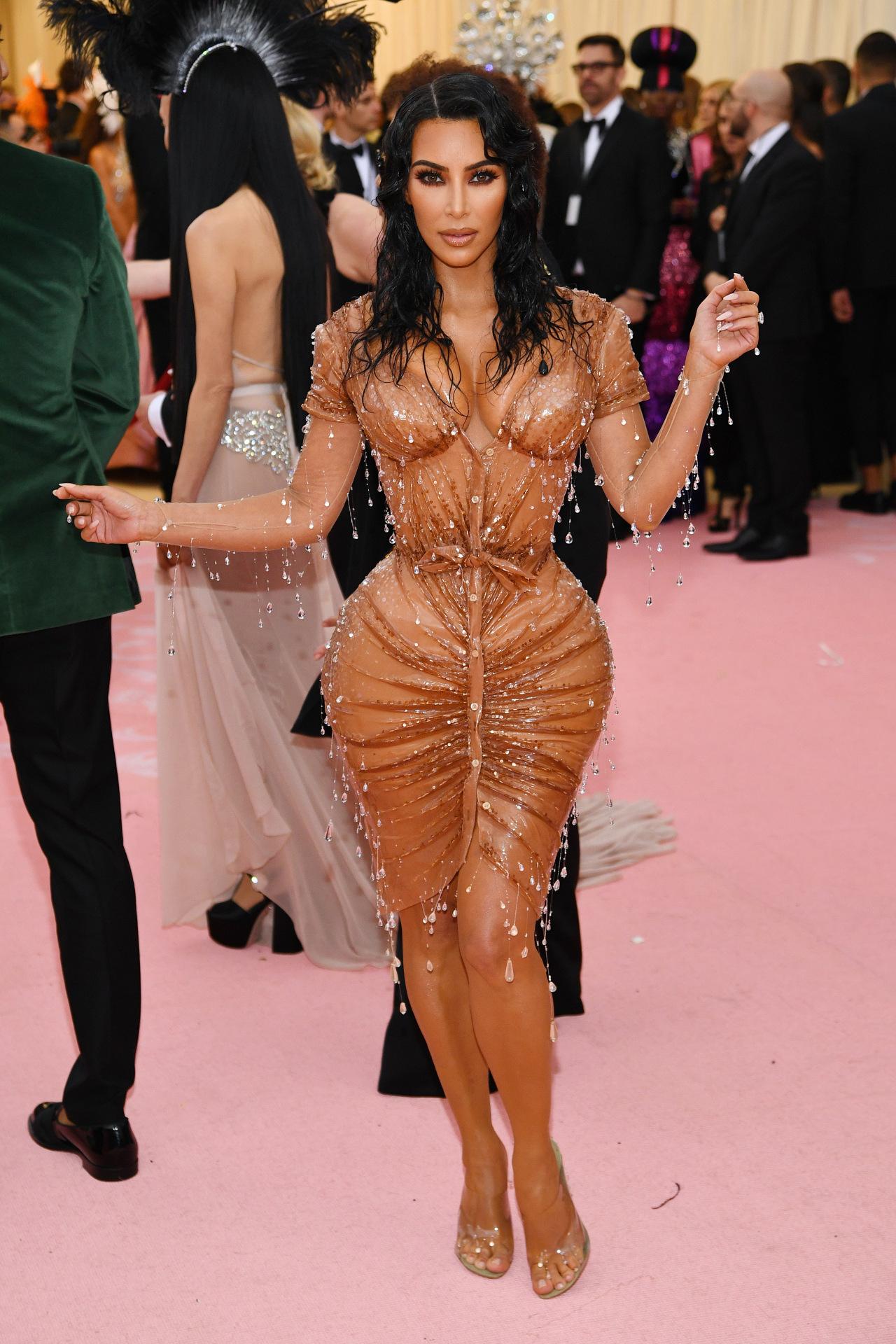
And now low-rise jeans and early 2000s styles are in again, so we are back to the thin standard. This pendulum swing of body standards has always existed, but with clothing trend cycles accelerating, body type “trends” are going to as well. This is an incredibly damaging side-effect of the trend-life cycle.
Fashion’s Future
Many aspects of this quick acceleration aren’t sustainable. Not only can the environment not support it forever, but neither can the average consumer.
The fact is that unless you’re incredibly wealthy and have your finger directly on the pulse of the trend at all times, a majority of people can’t keep up with trends now, and that’s likely only going to get worse. If the current trajectory continues, fashion cycles will rapidly accelerate even more than they already have.
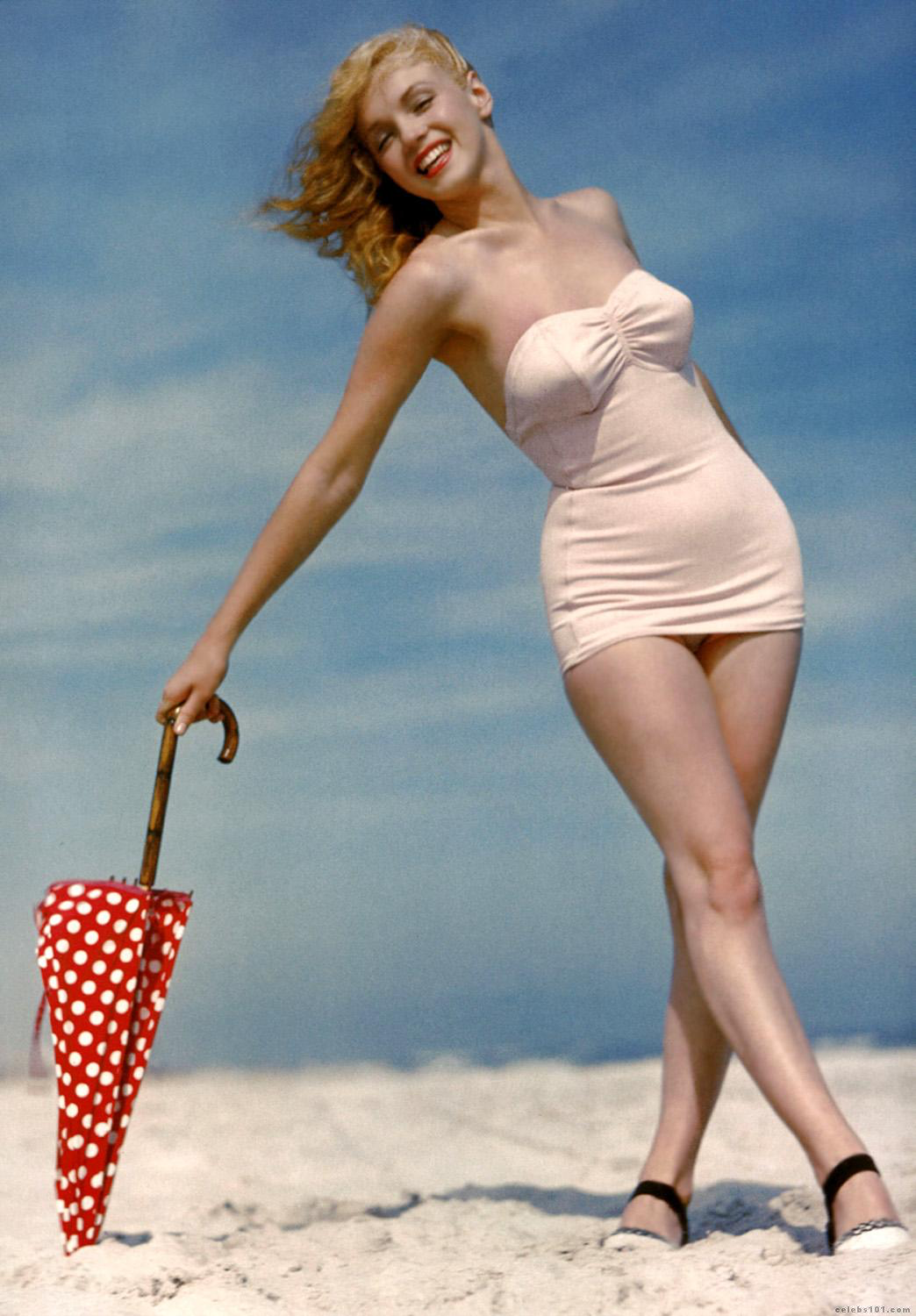
Perhaps the future of fashion is that this acceleration will reach a boiling point for people, and, realizing that they can’t keep up, will grow tired of following the fashion life cycle. Perhaps more people will be encouraged to develop their own unique, personal styles, and the next “trend” is going to be ignoring the trends completely.
Footnotes
- 1Andersen, Kurt. You Say You Want a Devolution? Vanity Fair. 2011, Dec. 7.
- 2
Shephard, Quinn, director. Not Okay. Searchlight Pictures, 2022 - 3El Maghraby, Laila. “Study of Fashion Theories by James Laver.” International Journal of Multidisciplinary Studies in Art and Technology, vol. 5, no. 2, 2022, pp. 55-80.
- 4Laver, James. Taste and Fashion: From the French Revolution to the Present Day. George G. Harrap & Co., 1937.
- 5Stampler, Laura. The Bizarre History of Women’s Clothing Sizes. Time. 2014, Oct. 23.
- 6Kelly, Jack. Skirt Lengths, Lipstick, Men’s Underwear And Champagne Sales Are All Recession Indicators. Forbes. 2023, Aug. 12.
- 7Waligora, Mallory. When fashion meets finance: The hemline index. The Oakland Post. 2023, Nov. 15.
- 8Laver, James. Fashion: A Detective Story. Vogue. 1959, Jan 1.
- 9How September 11 Changed American Fashion. CFDA. 2016.
- 10Chantree, Robin, and Brigid Trott. “Viral Fashion: Clothing in the 1918 Influenza Pandemic and the COVID-19 Pandemic.” Fashion Studies, vol. 5, no. 1, 2024, pp. 1-46.
- 11
Belich, James. The Black Death and European Expansion. Faculty of History, University of Oxford. 2014. - 12How the worst pandemic in human history prompted the birth of Italian luxury. NSS Magazine. 2020, Apr 14.
- 13
- 14
- 15Norris, Craig. After the Spanish flu came The Roaring 20’s — what fashion trend will follow COVID-19? CBC News. 2021, Jan 16.
- 16History.com editors. Flappers. History.com. 2018, Mar 6.
- 17Manikowski, Amy. Zelda Fitzgerald – the first American flapper. Biblio. 2021.
- 18The History of the It Girl. WWD.
- 19
- 20
- 21Soo Hoo, Fawina. The Latest Challenge in Costume Design: Reimagining Influencer Fashion. 2022, Jul. 29.
- 22Jackson, Hannah. Have You Seen This Bag? Vogue. 2023, Nov. 21.
- 23Ernest, Maya. Fast fashion drama: How a trendy green dress divided TikTok. Input. 2021, Jun. 3.
- 24Maiti, Rashmila. Fast Fashion and Its Environmental Impact. Earth.org. 2024, Jan 5.
- 25Nijman, Shari. UN Alliance For Sustainable Fashion addresses damage of ‘fast fashion.’ UN Environment Programme. 2019, Mar. 14.
- 26Nolen, Jeannette L. Twiggy. Britannica. 2024, Nov. 11.
- 27Nash, Alanna. The Model Who Invented Heroin Chic. The New York Times. 1997, Sept. 7.
